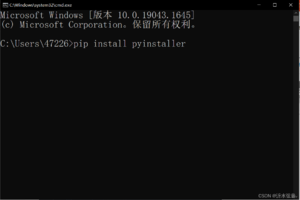深入解析Python编程中super关键字的用法
作者:j_hao104 时间:2021-08-24 18:17:10
官方文档中关于super的定义说的不是很多,大致意思是返回一个代理对象让你能够调用一些继承过来的方法,查找的机制遵循mro规则,最常用的情况如下面这个例子所示:
class C(B):
def method(self, arg):
super(C, self).method(arg)
子类C重写了父类B中同名方法method,在重写的实现中通过super实例化的代理对象调用父类的同名方法。
super类的初始方法签名如下:
def __init__(self, type1, type2=None): # known special case of super.__init__
"""
super(type, obj) -> bound super object; requires isinstance(obj, type)
super(type) -> unbound super object
super(type, type2) -> bound super object; requires issubclass(type2, type)
Typical use to call a cooperative superclass method:
除去self外接受一个或者或者两个参数,如同注释声明的一样,接受两个参数时返回的是绑定的super实例,省略第二个参数的时候返回的是未绑定的super对象。
一般情况下当调用继承的类方法或者静态方法时,并不需要绑定具体的实例,这个时候使用super(type, type2).some_method就能达到目的,当然super(type, obj)在这种情况下也能够使用,super对象有自定义实现的getattribute方法也能够处理。不过,后者一般用来调用实例方法,这样在查找方法的时候能够传入相应的实例,从而得到绑定的实例方法:
class A(object):
def __init__(self):
pass
@classmethod
def klass_meth(cls):
pass
@staticmethod
def static_meth():
pass
def test(self):
pass
class B(A):
pass
>>> b = B()
>>> super(B, b).test
<bound method B.test of <__main__.B object at 0x02DA3570>>
>>> super(B, b).klass_meth
<bound method type.klass_meth of <class '__main__.B'>>
>>> super(B, b).static_meth
<function static_meth at 0x02D9CC70>
>>> super(B, B).test
<unbound method B.test>
>>> super(B, B).klass_meth
<bound method type.klass_meth of <class '__main__.B'>>
>>> super(B,B).satic_meth
>>> super(B,B).static_meth
<function static_meth at 0x02D9CC70>
初始化super对象的时候,传递的第二个参数其实是绑定的对象,第一个参感觉数可以粗暴地理解为标记查找的起点,比如上面例子中的情况:super(B, b).test就会在B.__mro__里面列出的除B本身的类中查找方法test,因为方法都是非数据描述符,在super对象的自定义getattribute里面实际上会转化成A.__dict['test'].__get__(b, B)。
super在很多地方都会用到,除了让程序不必hardcode指定类型让代码更加动态,还有其他一些具体必用的地方比如元类中使用super查找baseclass里面的new生成自定义的类型模板;在自定义getattribute的时候用来防止无限循环等等。
关于super建议读者将它与python的描述符一起来理解,因为super就实现了描述符的协议,是一个非数据描述符,能够帮助大家更好的理解super的使用和工作原理。
同时,有以下4个点值得大家注意:
1、单继承时super()和__init__()实现的功能是类似的
class Base(object):
def __init__(self):
print 'Base create'
class childA(Base):
def __init__(self):
print 'creat A ',
Base.__init__(self)
class childB(Base):
def __init__(self):
print 'creat B ',
super(childB, self).__init__()
base = Base()
a = childA()
b = childB()
输出结果:
Base create
creat A Base create
creat B Base create
使用super()继承时不用显式引用基类。
2、super()只能用于新式类中
把基类改为旧式类,即不继承任何基类
class Base():
def __init__(self):
print 'Base create'
执行时,在初始化b时就会报错:
super(childB, self).__init__()
TypeError: must be type, not classobj
3、super不是父类,而是继承顺序的下一个类
在多重继承时会涉及继承顺序,super()相当于返回继承顺序的下一个类,而不是父类,类似于这样的功能:
def super(class_name, self):
mro = self.__class__.mro()
return mro[mro.index(class_name) + 1]
mro()用来获得类的继承顺序。
例如:
class Base(object):
def __init__(self):
print 'Base create'
class childA(Base):
def __init__(self):
print 'enter A '
# Base.__init__(self)
super(childA, self).__init__()
print 'leave A'
class childB(Base):
def __init__(self):
print 'enter B '
# Base.__init__(self)
super(childB, self).__init__()
print 'leave B'
class childC(childA, childB):
pass
c = childC()
print c.__class__.__mro__
输入结果如下:
enter A
enter B
Base create
leave B
leave A
(<class '__main__.childC'>, <class '__main__.childA'>, <class '__main__.childB'>, <class '__main__.Base'>, <type 'object'>)
supder和父类没有关联,因此执行顺序是A —> B—>—>Base
执行过程相当于:初始化childC()时,先会去调用childA的构造方法中的 super(childA, self).__init__(), super(childA, self)返回当前类的继承顺序中childA后的一个类childB;然后再执行childB().__init()__,这样顺序执行下去。
在多重继承里,如果把childA()中的 super(childA, self).__init__() 换成Base.__init__(self),在执行时,继承childA后就会直接跳到Base类里,而略过了childB:
enter A
Base create
leave A
(<class '__main__.childC'>, <class '__main__.childA'>, <class '__main__.childB'>, <class '__main__.Base'>, <type 'object'>)
从super()方法可以看出,super()的第一个参数可以是继承链中任意一个类的名字,
如果是本身就会依次继承下一个类;
如果是继承链里之前的类便会无限递归下去;
如果是继承链里之后的类便会忽略继承链汇总本身和传入类之间的类;
比如将childA()中的super改为:super(childC, self).__init__(),程序就会无限递归下去。
如:
File "C:/Users/Administrator/Desktop/crawler/learn.py", line 10, in __init__
super(childC, self).__init__()
File "C:/Users/Administrator/Desktop/crawler/learn.py", line 10, in __init__
super(childC, self).__init__()
File "C:/Users/Administrator/Desktop/crawler/learn.py", line 10, in __init__
super(childC, self).__init__()
File "C:/Users/Administrator/Desktop/crawler/learn.py", line 10, in __init__
super(childC, self).__init__()
File "C:/Users/Administrator/Desktop/crawler/learn.py", line 10, in __init__
super(childC, self).__init__()
File "C:/Users/Administrator/Desktop/crawler/learn.py", line 10, in __init__
super(childC, self).__init__()
File "C:/Users/Administrator/Desktop/crawler/learn.py", line 10, in __init__
super(childC, self).__init__()
File "C:/Users/Administrator/Desktop/crawler/learn.py", line 10, in __init__
super(childC, self).__init__()
File "C:/Users/Administrator/Desktop/crawler/learn.py", line 10, in __init__
super(childC, self).__init__()
File "C:/Users/Administrator/Desktop/crawler/learn.py", line 10, in __init__
super(childC, self).__init__()
File "C:/Users/Administrator/Desktop/crawler/learn.py", line 10, in __init__
super(childC, self).__init__()
File "C:/Users/Administrator/Desktop/crawler/learn.py", line 10, in __init__
super(childC, self).__init__()
File "C:/Users/Administrator/Desktop/crawler/learn.py", line 10, in __init__
super(childC, self).__init__()
RuntimeError: maximum recursion depth exceeded while calling a Python object
4、super()可以避免重复调用
如果childA基础Base, childB继承childA和Base,如果childB需要调用Base的__init__()方法时,就会导致__init__()被执行两次:
class Base(object):
def __init__(self):
print 'Base create'
class childA(Base):
def __init__(self):
print 'enter A '
Base.__init__(self)
print 'leave A'
class childB(childA, Base):
def __init__(self):
childA.__init__(self)
Base.__init__(self)
b = childB()
Base的__init__()方法被执行了两次
enter A
Base create
leave A
Base create
使用super()是可避免重复调用
class Base(object):
def __init__(self):
print 'Base create'
class childA(Base):
def __init__(self):
print 'enter A '
super(childA, self).__init__()
print 'leave A'
class childB(childA, Base):
def __init__(self):
super(childB, self).__init__()
b = childB()
print b.__class__.mro()
enter A
Base create
leave A
[<class '__main__.childB'>, <class '__main__.childA'>, <class '__main__.Base'>, <type 'object'>]
猜你喜欢
div、section、article 的区别
解析:校对确定 较为复杂的一些特殊情况
Python的互斥锁与信号量详解
php使用递归与迭代实现快速排序示例
Python用dilb提取照片上人脸的示例

解决seaborn在pycharm中绘图不出图的问题
Python实现将绝对URL替换成相对URL的方法
python常用知识梳理(必看篇)
Python OpenCV图像指定区域裁剪的实现
PHP数组中头部和尾部添加元素的方法(array_unshift,array_push)

asp如何将数字转化成条形图?
利用Pycharm将python文件打包为exe文件的超详细教程(附带设置文件图标)

Python图像特效之模糊玻璃效果

MySQL8自增主键变化图文详解

PHP中Http协议post请求参数
JavaScript中通用的jquery动画滚屏实例
对python3.4 字符串转16进制的实例详解
js string 转 int 注意的问题小结
如何获取当前 select 元素的值
深入Golang的接口interface



